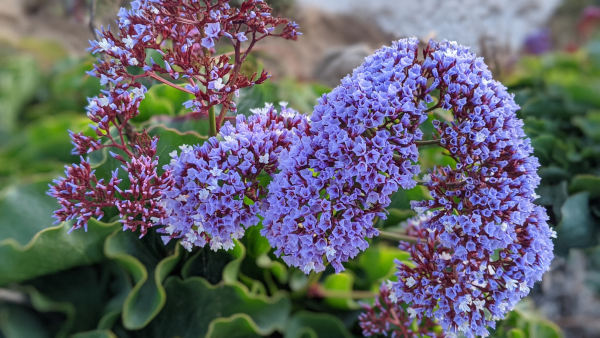How to grow Limonium
Commonly known as ‘sea lavender’, or sometimes ‘statice’, this member of the plumbago family grows wild in salt marshes and sand dunes throughout the world. It is cultivated for its softly textured haze of summer blooms, held by stiff, wiry stems above low, flat, basal rosettes of foliage. Of the 150 or so species, some are annual or biennial, though the majority (and most popular for use in gardens) are evergreen perennials. These can be semi-evergreen or even lose all their leaves in very cold winters.
The delicate, papery flowers of limonium are particularly good cut and/ or dried, and are much used by florists. They will also dry out on the plant, becoming attractive skeletal forms which persist well into winter.
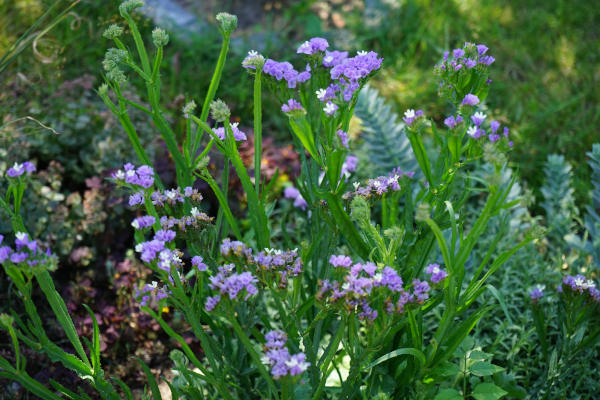
Zantedeschia is a genus of flowering plants from the family Araceae and is native to southern Africa. With a rich history dating back to the Ancient Romans, these deciduous or semi-evergreen perennials have been used as a symbol of celebration. Zantedeschia was Named after Professor Giovanni Zantedeschia, an Italian botanist.
There are two main forms of Zantedeschia: hardy and tender. Hardy forms of the plant can be grown outdoors, enjoy moist soil and full sun or partially shaded conditions - these are known as Arum lilies. Tender forms of Zantedeschia prefer being grown in containers or pots and should be brought inside over the winter - these are known as Calla lilies.
With tuberous flora in all colours from whites, yellows and oranges to deep reds and purples, Zantedeschias are not to be overlooked in any garden, as long as they have sufficient sunlight to grow in.
Ready to learn more about growing Zantedeschia? Read on for all there is to know...

Key Information
Soil pH
Position
Hardiness

Horticultural Divisions-
Species | Size (heights given are of the plant when in flower) | Hardiness | Plant type | Notes |
Limonium gmelinii | 50-60cm | H5 (-10°C to -15°C) | Evergreen |
|
Limonium gmelinii ‘Dazzle Rocks’ | 50-60cm | H7 (-20°C and beyond) | Evergreen | A recently introduced hardier cultivar of the species. Very popular. |
Limonium bellidifolium | 15cm | H5 (-10°C to -15°C) | Evergreen, woody based |
|
Limonium perezii | 80cm | H3 (1°C to -5°C) | Evergreen |
|
Limonium platyphyllum | 60cm | H7 (-20°C and beyond) | Evergreen |
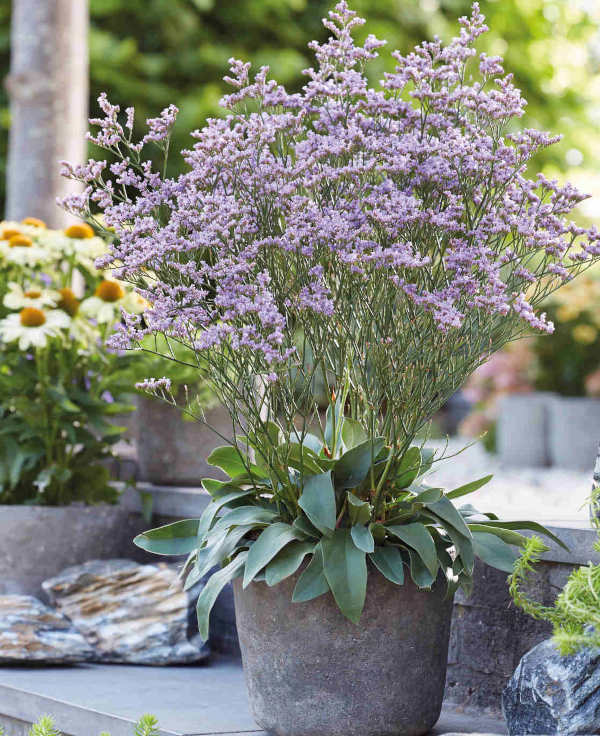
Where & when to plant Limonium
Position- Full sun
Soil- Preferably sandy and free draining, though will thrive just as well in better soils providing they are well-drained and in plenty of sun.
Flowering Period- Summer
Hardiness- Varies according to species.
For best results, plant in autumn or spring. An autumn planting can be done by those gardening in mild conditions (and broadly speaking, this is the southern half of the UK). For those liable to cold winters, it is best to wait until spring (generally the northern half of the UK). Planting can also be carried out in summer, though be prepared to water regularly.
Choose a sunny spot with good drainage – limonium loves sandy, free-draining conditions so coastal or gravel gardens are ideal. Having said this, well-draining border will give equally good results, providing there is plenty of sun and you don’t over fertilise (see ‘Feeding’ section below).
Limonium can also be grown in containers filled with a very well-draining, low nutrient mix.
How to plant Limonium
- For planting in the garden, dig the soil area removing any large stones and weeds and breaking up any lumps. If your soil is anything other than free draining, now is the time to add plenty of horticultural grit or sharp sand. Rake level and firm with your heels. Rake level again.
- Water plants well and allow to drain before planting.
- A good tip is to dig a hole twice the size of the root-ball. Fill with water and allow to drain before placing in the plant.
- Place the plant in the hole, ensuring the top of the root ball sits level with the surface of the soil. Too low and the plant may rot, too high and the roots can dry out.
- Backfill with soil and firm in gently with your foot.
- Soak well with water.
- Mulch around the base, preferably with horticultural grit.
- For planting in containers, first choose an appropriately sized pot. You may wish to grow your limonium on its own in a pot just a few centimetres larger than the rootball, or as part of a larger, mixed container display. Either way, ensure there are plenty of drainage holes in the bottom.
- If you are using a large or heavy pot, it can be a good idea to fill and plant it in situ to save yourself the trouble of moving once full.
- Use a good quality potting compost with generous amounts of horticultural grit and/ or sharp sand mixed in. No need to add additional fertiliser at this point.
- Start by partially filling the pot with compost; enough so that when placed on it the upper surface of the root ball is about 3cm lower than the top of the pot.
- Infill all the space surrounding the root ball with compost, firming down with your fingers then adding a little more so the plant is held tight.
- Pick up the container and lightly tap on the potting bench or ground a few times to help further settle the compost around the plant.
- Soak well with water.
- A mulch with horticultural grit will look attractive and help to prevent a ‘cap’ or crust forming on the top of the compost (something container plants can suffer due to the artificial nature of their watering).
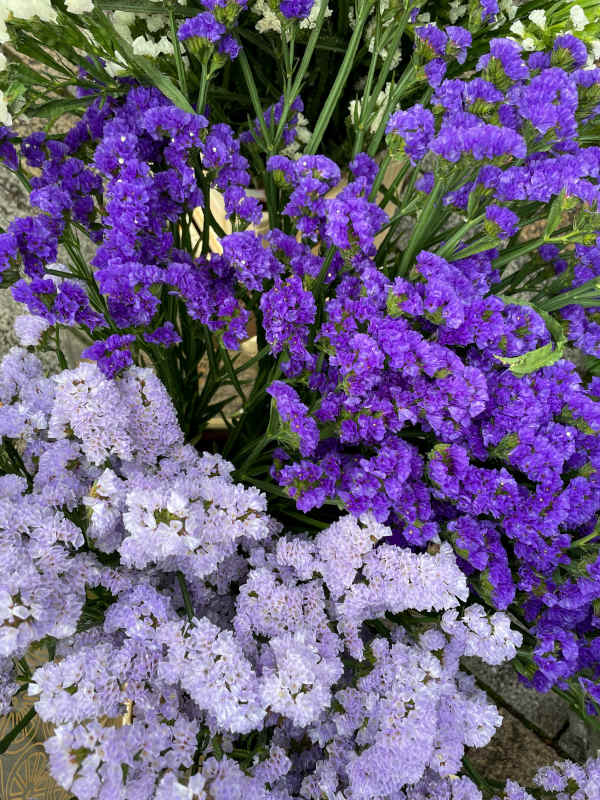
What to plant with Limonium
Other lovers of the limonium’s preferred sunny, free draining conditions include santolina, eryngium, oenothera (formerly gaura), cistus, phlomis, Verbena bonariensis, and nepeta. Many of these will gently naturalise over time for a low input, beautifully knitted together display.
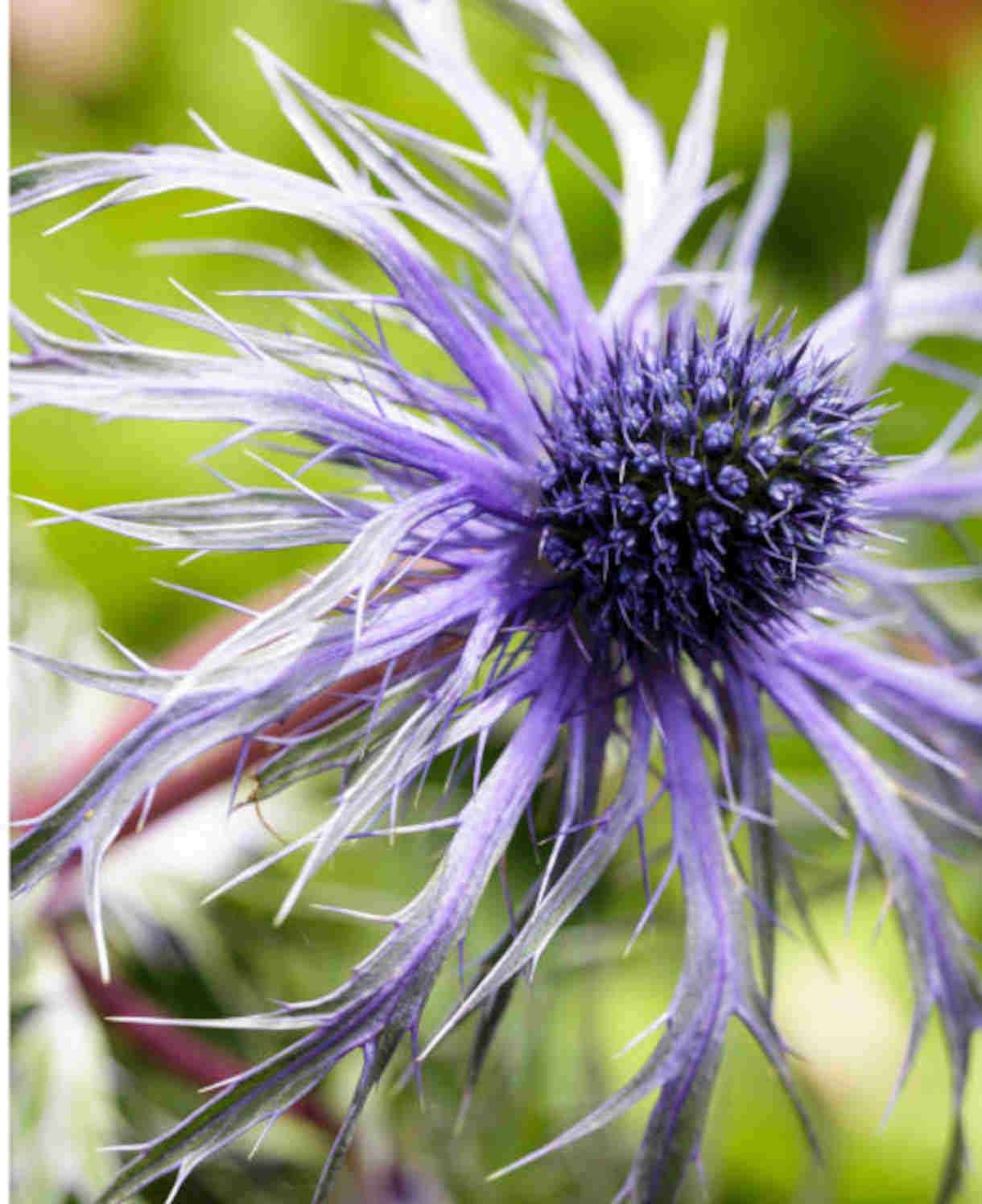
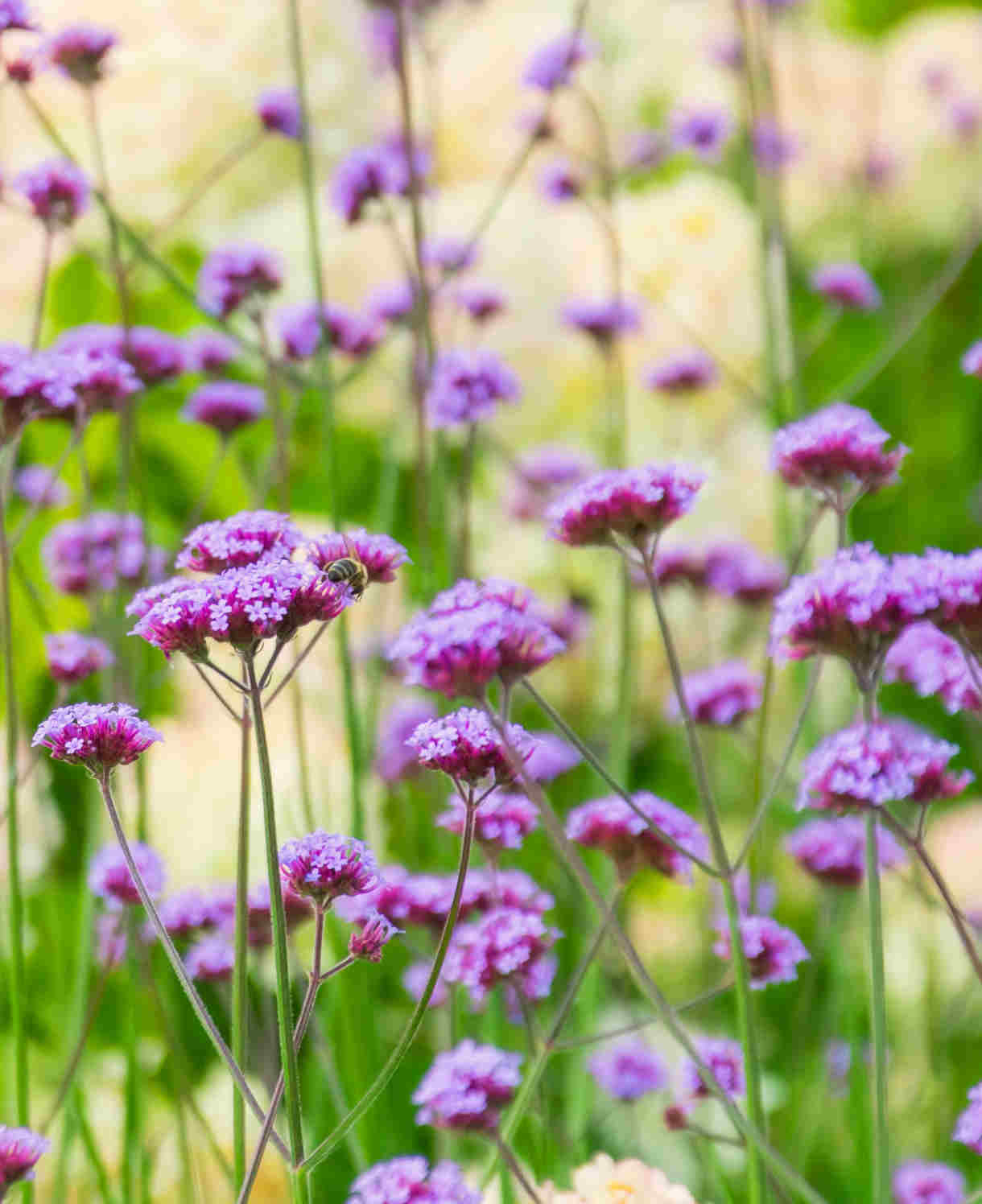
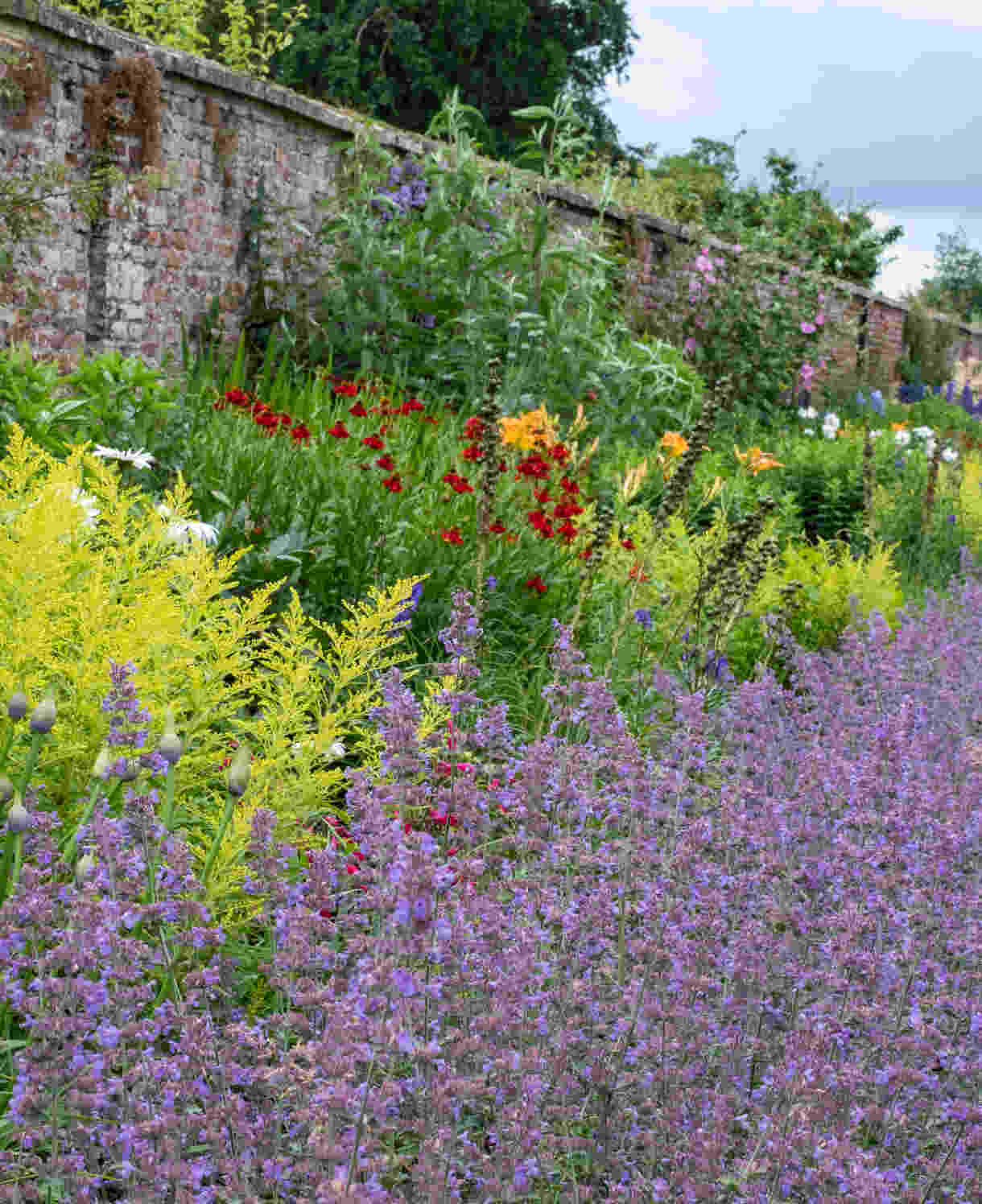
How to care for Limonium
Pruning and Deadheading
This low-maintenance plant requires minimal pruning – simply the removal of spent flowers once a year, and if necessary, a tidying up of any scruffy, winter-damaged foliage in spring.
There are two schools of thought regarding when you chop back the flowerheads. There are some gardeners who say allowing plants to set seed wears them out and shortens their lifespan, and so cut back the stems immediately after flowering. Others consider the autumn and winter interest offered by the attractive, dried seedheads as being worth sacrificing a couple of years for. If you fall into the latter category, leave stems intact until early spring, cutting back just before new growth begins.
Watering
Limonium are very drought tolerant once established, though like most plants still require watering during their first few months in the ground. Give a good soak on first planting, then aim to repeat this every couple of weeks until you’re happy the plant is well-established.
Container-grown limonium is a different matter and will need to be watered regularly throughout every growing season. Allowing the top couple of centimetres of compost to dry out between watering is a useful rule of thumb to help avoid overwatering. Use your finger inserted into the compost to check. From mid-autumn, the British climate tends to take over watering needs, though do remember to step in in the event of an unseasonably dry spell.
Feeding
Limonium grows naturally in low nutrient conditions and is likely to underperform if over fertilised. Too many nutrients can prompt excessive foliage growth at the expense of flowers, and in some cases even kill the plant.
In the ground, an annual mulch of well-rotted organic matter (i.e., a layer of manure or garden compost applied to the soil around the plant) will suffice when it comes to adding nutrients into the soil. This has the added benefit of suppressing weeds, locking in moisture, and – when applied in autumn as is recommended with limonium – insulating from winter cold and wet.
Container-grown plants rely more on the gardener for nutrition. Get off to a flying start by making sure you use a good quality compost (remembering not to add any slow release granules as you would usually), then from March to September apply a weak, low nitrogen liquid feed, such as tomato feed mixed to a quarter or half strength. Do this every 2-3 weeks.
Cold Protection
The need for additional winter protection depends on the hardiness of your species. L. platyphyllum and the popular new ‘Dazzle Rocks’ cultivar of L. gmelinii are as hardy as it gets (as long as they are grown in well-draining conditions), and require no extra help to get through the colder months.
- bellidifolium should be okay throughout most of the UK, though will benefit from an insulating autumn mulch.
- perezii is much more delicate and is likely to struggle with anything below -3°. In all but the mildest of microclimates, this species is best grown in a container to allow for overwintering in a frost-free environment such as a greenhouse, conservatory, or sunny porch. Move indoors in September and return outside once all risk of frost has passed. This varies from region to region, though averages around mid-May.
Pests and Diseases
Limonium tends to be problem-free aside from the potential for powdery mildew (a fungal disease). This appears as a white, powder-like coating on foliage, and can be caused by poor air flow, excessive fertilising, or insufficient sunlight.
Prune off and dispose of any affected leaves and if necessary, thin out surrounding plants to improve airflow and light levels. Do not be tempted to feed the plant, as this will generate an excess of soft, new growth which is particularly susceptible to the fungus.
How to propagate Limonium
Limonium comes easily from seed, and established clumps can be divided in spring.
Seed
- Seeds are typically ready for collecting in late summer when the seedheads have dried and turned brown.
- Snip the seedheads from the plant using scissors or secateurs. Try to do this in dry conditions, and place in a small, labelled paper bag or envelope. Store somewhere cool and dry until it is time to sow in early spring.
- In early spring, fill a seed tray or small pot with a very well-draining compost mix, compressing the surface lightly with a flat piece of wood or the bottom of another pot.
- Sprinkle the seeds evenly over the surface of the compost.
- Use a garden sieve to cover with a fine layer of compost.
- Water the soil gently with a fine spray until it is evenly moist but not waterlogged.
- Place the seed tray or pots in a propagating unit, heated greenhouse, or on a sunny windowsill. If on the latter, covering with a clear plastic lid or plastic wrap will speed germination by creating a mini-greenhouse effect. Remove this once you notice seedlings emerge.
- When the seedlings have grown large enough to handle, transplant them into individual pots filled with a very gritty mix and continue to grow on in a warm, protected environment.
- Keep barely moist, never soggy.
- Plant out in late spring, following our ‘How to plant limonium’ section above.
Division (done every 2-3 years)
- Choose a day when the soil is not frozen or waterlogged.
- Dig the plant out of the ground.
- Shake off any excess soil.
- Separate the plant into sections using either swift, cutting blows with a sharp spade, or two forks inserted back-to-back with tines touching, handles then pushed together to prise the plant apart.
- Discard old, damaged, or surplus pieces, keeping healthy, vigorous material.
- Replant decent-sized pieces where desired, and any smaller bits can be potted up.
- Water well until fully established.
* Many plants carry Plant Breeders Rights and cannot be propagated for commercial purposes.
Common Limonium questions
Is limonium a perennial?
While annual and biennial species do exist, most of the commonly cultivated limonium species are perennial. This means they can be expected to remain in the garden for several years, flowering each summer.
Can limonium be divided?
Yes, see our ‘How to propagate limonium’ section above. Aim to give plants 2-3 years to recover before dividing again.
Is limonium winter hardy?
This can vary from species to species. See our ‘Cold Protection’ section above for more details.
